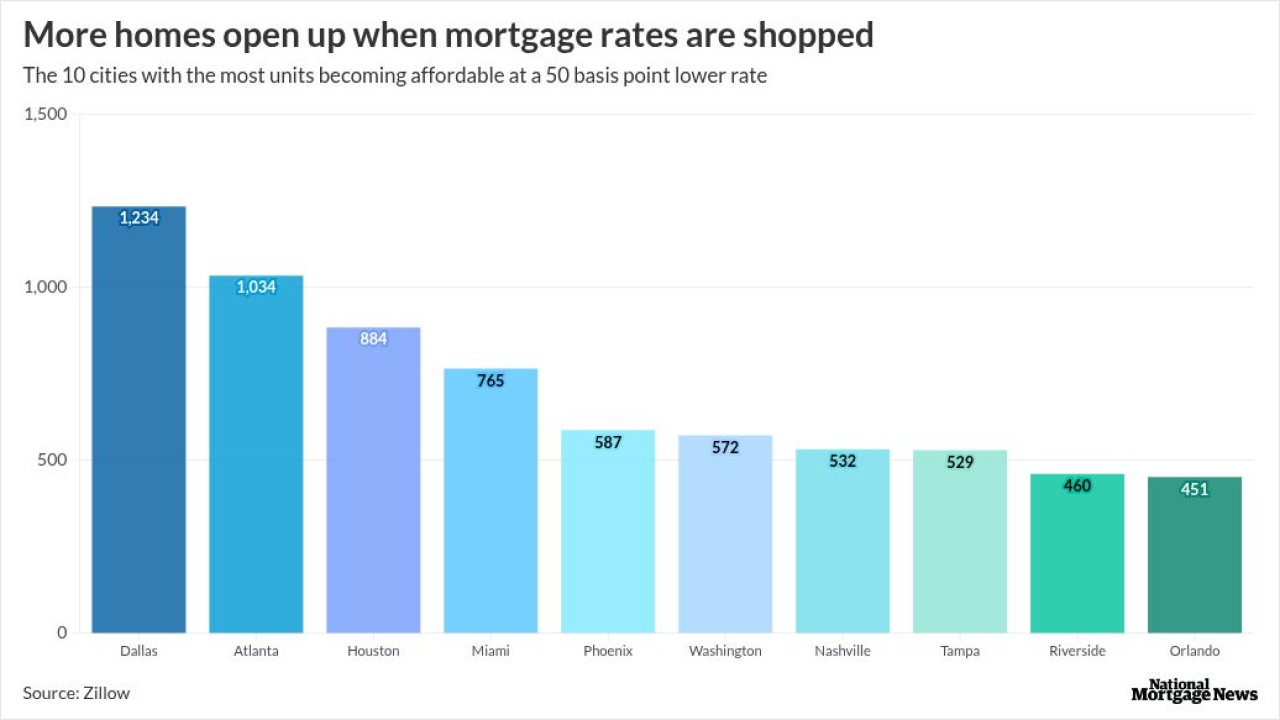If you're in the market to buy or sell a house, you'll want to make informed decisions every step of the way. Luckily, Uncle Sam has a huge treasure trove of data you can use.
Information from the Home Mortgage Disclosure Act database is at your disposal, and can be accessed at consumerfinance.gov/data-research/hmda.
For instance, the database shows that average mortgage amounts jumped between 2014 and 2015, meaning that average home prices jumped, as well. The average home-loan amount in 2015 was $261,000 for a first lien (an increase of 6% over 2014), and $65,000 for second mortgages and home equity lines of credit (a 10% increase).
Great news if you're selling a house, but not so great if you're buying one.
An analysis of the data by the Federal Reserve confirms that real estate grew pricier last year. "In 2015, house prices continued their upward trend evident since 2012, and mortgage interest rates remained low, although slightly above the historical lows reached in late 2012 and early 2013," according to the central bank.
Based on HMDA figures, more than 90% of last year's total of $1.8 trillion in mortgage money went to one- to four-unit homes. Non-owner-occupied units (usually investment properties) accounted for 10% of loan dollars. (The data are gleaned from the LendingPatterns tool of ComplianceTech, a fair-lending and technology company in McLean, Va.)
Multifamily loans accounted for just 8% of all mortgages last year, with a tiny 0.6% going for manufactured housing. However, that figure doesn't tell the whole story. There are two kinds of manufactured housing loans: one for properties secured to a lot and cannot be moved, and one for units that remain detached. The former is a mortgage; the other, more like an auto loan. The mortgage amount is far lower than the car-type loan.
Getting a mortgage was slightly easier for buyers last year than in prior years, when lenders put a tight squeeze on credit, according to the Fed analysis.
"Mortgage credit conditions continued to slowly ease, but credit remained more difficult to obtain for individuals with lower credit scores," the central bank said.
"Reports throughout the year from the Survey on Bank Lending Practices indicate that several large banks relaxed their credit requirements, on net, for mortgages that were eligible for purchase by the government-sponsored enterprises (Fannie Mae and Freddie Mac) or that met the Consumer Financial Protection Bureau's standards for qualified mortgages. Growth in new housing construction continued at a moderate pace."
More good news: Fewer people were turned down for a mortgage in 2015.
"In 2015, the overall denial rate on applications for home-purchase loans of 12.1%, as well as the denial rate for refinance loan applications of 27.4%, was somewhat lower than in 2014," according to the Fed report. However, denials for minorities were higher than for whites.
HMDA was designed by Congress to make sure banks lend to minorities and to low- to moderate-income borrowers ("low-mods"). Minorities make up more than a third of the U.S. population, but received only 19% of 2015 mortgage dollars ($351 million out of $1.85 trillion).
Breaking it down further, Asians received most of the minority mortgage dollars last year: $134 billion. Latinos were close behind at $129 billion. Blacks trailed at $71 billion, or about 4% of total volume. Native Americans and Native Hawaiians together received about $10 billion, or about one half of 1% of total lending dollars.
In comparison, whites received 62% of all mortgage dollars last year: $1.1 trillion. The balance fell in the "unknown" and "not applicable" categories.
Two-thirds of 2015 minority lending was in conventional (non-governmental) mortgages. The rest was in government loans like those offered through the Federal Housing Administration, Department of Veterans Affairs, the Rural Housing Service and the Farm Service Agency.
Minorities used 54% of the dollars they were granted to buy houses, and 43% to refinance their current abodes. That's slightly different than the national average, in which 51% of the mortgage money went for purchases and 45% for refis. (In both cases, the balances were in home-improvement loans.)
Fifty-five percent of 2015's minority mortgage money went to upper-income borrowers. Only 16% went to low-mods. Even so, that was more than went to low-mod borrowers overall, which was just 12%.
Average loan amounts to minorities were lower than the overall average, at $248,000 for first liens and $38,000 for subordinate liens.
So just how big is the HMDA database? It's huge. Nearly 7,000 lenders reported their mortgage data for 2015 to the Federal Financial Institution Examinations Council, a multi-agency government group. While the database is enormous, it is not quite comprehensive. Mortgage lenders with less than $44 million in assets do not have to provide data. But the large majority of mortgage lenders are required to file.
Lew Sichelman is an independent journalist who has been covering the housing and mortgage markets for more than 40 years.





